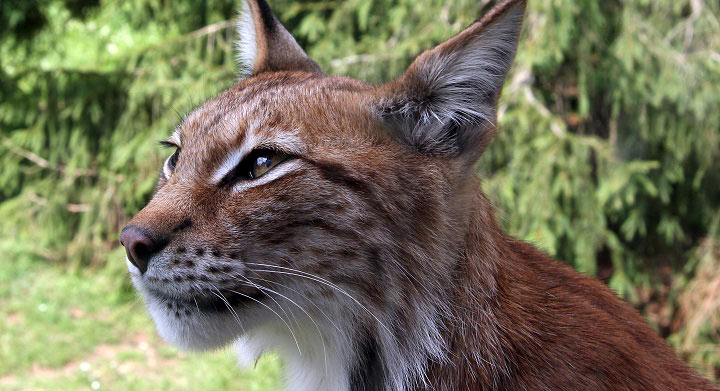Missing lynx: Reintroducing big cats to the British countryside
Posted on 13 March 2015
OPINION: Chris Thomas, Professor of Conservation Biology, weighs up the pros and cons of reintroducing the elusive Eurasian lynx to Britain. (This article was first published on the BBC News website on 11 March 2015)

Polarised views are likely to be expressed.”
As each successive ‘sighting’ of a big cat in the British countryside disappears into a media-stoked mirage, it is time to ask whether we should release real 10-30 kilogram cats onto our land once more.
Now the Lynx UK Trust wants to do just this.
It has launched a questionnaire to find out what people think, before it asks Natural England and Scottish Natural Heritage for permission to go ahead with trial releases. Polarised views are likely to be expressed. Some would love to see cute tufty-eared and spotty cats wandering our woods and hills and controlling plagues of deer that are destroying our woodlands. Others fear these ‘fierce’ carnivores would eat our sheep, threaten the livelihoods of farmers and gamekeepers, endanger native British species, and leave pet owners and even parents in fear.
But it is not clear what information is being provided to help people make a dispassionate judgement.
The benefits
The Eurasian lynx was the largest wild species of cat in Britain throughout the last 10,000 plus years, only dying out in the first millennium AD, almost certainly as a consequence of human persecution. It ‘belongs’ in our countryside. Indeed, we are obliged under the European Habitats Directive to “study the desirability of reintroducing [threatened] species” that have become extinct from our region.
The suggested benefits of reintroducing lynx are to make British ecosystems more natural, attract ecotourism, control deer populations and hence reduce economic damage to forestry, and thus allow forests to regenerate naturally. This would reduce the need for costly deer fences, increase the amount of undergrowth in woodlands (benefitting some woodland birds), and reduce the numbers of deer spilling out of the woods and eating farmers’ crops. The lynx are also likely to eat ‘invasive’ muntjac deer and rabbits, neither of which are native to Britain, and they will sometimes kill foxes. There is a negligible direct risk to humans.
Seems sensible.
The risks
Not all benefits will necessarily be realised, and there are some genuine risks. The numbers of deer killed by lynx in European studies seem insufficient to reduce deer populations to the point where they would allow trees to regenerate. In Scotland the impact might be even less because the main culprit preventing tree regeneration is red deer, and lynx usually catch the smaller roe deer.
Most European studies find low predation rates on domestic livestock in areas where sheep are rare (a farmer compensation system will be needed). But a recent study in Norway reported lynx to be killing twice as many domestic sheep as roe deer in summer, so we need to beware of this in our sheep-strewn British countryside. Lynx also sometimes eat grouse and presumably pheasants, which will bring them into conflict with landowners even if the actual losses are fairly small. The Royal Society for the Protection of Birds will be unhappy if lynx eat the last 1300 surviving capercaillies, the largest species of grouse in Scotland.
The rabbit-eating alternative?
Then there is the cost.
The Eurasian lynx is one of the least threatened species of cat in the world and it is already increasing in continental Europe. Why spend hundreds of thousands if not millions of pounds on a species that is not endangered when we could introduce the much smaller Iberian lynx, which is the most threatened species of cat on Earth?
The Iberian species is now restricted to Spain and Portugal, but its ancestors lived throughout Europe before they were displaced by the incoming Eurasian species, which arrived from the east some 130,000 years ago. The Iberian lynx appears to be the closest surviving relative of the original British lynx; why not introduce this truly-endangered rabbit-eating cat instead?
The text of this article is licensed under a Creative Commons Licence. You're free to republish it, as long as you link back to this page and credit us.

Chris Thomas
Research Title: Professor of Conservation Biology
An ecologist and evolutionary biologist who studies the responses of species to climate change, habitat fragmentation and biological invasions.
Discover the details
Find out more in the York Research Database and beyond
Publications
- BBC News website Should the lynx be reintroduced to Britain?
Visit the departments
Explore more research

A research project needed to spot trees on historic ordnance survey maps, so colleagues in computer science found a solution.

We’re using gaming technology to ensure prospective teachers are fully prepared for their careers.

A low cost, high-accuracy device, could play a large part in the NHS's 'virtual wards'.
